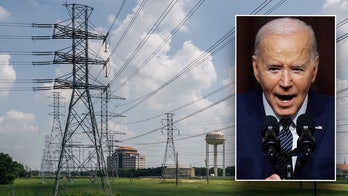Where do Trump, Biden stand in each swing state?
Campaign strategist John Thomas weighs in on ‘Fox & Friends First.’
The day of decision has finally arrived as Americans head to the polls for the 2020 presidential election.
In reality, Election Day has streched across several weeks, with more than 98 million peole already casting their ballots -- either through mail-in or early in-person voting. That's more than double the 46 million people who voted early in 2016.
But while early voter turnout this presidential cycle has been substantial, some key battleground states haven't seen much early activity.
Pennsylvania and Florida, two major swing states highly coveted by both President Trump and Democratic nominee Joe Biden – have notably seen fewer early voters than other states.
Pennsylvania, which holds 20 electoral votes, is seeing an extremely close race between the two candidates, with Biden is narrowly leading Trump in the polls by 2.5 percent, well within the four-point margin of error.
But while some states have seen more than half of all their active voters cast their ballots, Pennsylvania has received ballots from only about a quarter of expected voters so far. Just over 2.4 million Pennsylvanians have voted, which is leading many to wonder how many voters will be hitting the polls Tuesday.
Trump won Pennsylvania in 2016 by a slim 0.7 percent of the votes, which equated to nearly 44,300 votes, according to The New York Times -- meaning every ballot in the Keystone State matters, particularly for Biden’s campaign, which is reliant on the state’s electoral votes.
Hillary Clinton lost Pennsylvania, Michigan and Wisconsin in 2016 – all states that went blue for Barack Obama. Biden will need to recapture those states in order to win the White House.
Florida has seen a larger turnout with nearly 9 million ballots returned from the state’s more than 14 million active voter base. But the polls could still expect to see a flood of voters Tuesday.
Trump also won Florida by a narrow margin with 1.2 percent of the vote, equating to roughly 113,000 votes. The president will be looking to secure the battleground state in his attempt to win re-election.
FEDS TO MONITOR POLLS IN FLORIDA BUT POLICE WON’T BE SEEN UNLESS THERE'S AN ‘EMERGENCY’
New battlegrounds
Michigan and Ohio have both seen turnout rates hovering around 60 percent as of Monday, the Washington Post reported.
Newly emerging battleground states Arizona and Georgia saw a large boost in their numbers of early voters in the lead-up to Tuesday.
Both states, which are traditionally Republican, voted for Trump in 2016. This time around, they've not only seen a record number of early voters turn out, but polls in both states have shown tighter races than in 2016.
Trump won in Arizona by 3.5 percent four years ago, though that was a drastic change from 2012 when Mitt Romney walked away with a 10-point lead over incumbent President Barack Obama.
In 2008, GOP nominee Sen. John McCain, R-Ariz., took an eight-point lead over Democratic challenger Sen. Obama.
Polls show a very tight race in the Southwest state, with Biden actually leading by 0.9 percent, according to Real Clear Politics.
Georgia on their minds
Trump won in Georgia by 5 percent, though polls show Biden is trailing him by just 0.2 points.
According to U.S. Elections Project, more than 3.9 million Georgia voters have already cast their ballots, a staggering number when compared to the 4.1 million votes cast in total during the 2016 presidential race.
The race four years ago saw 138 million total votes, leaving states to wonder if this year's high level of early voting is primarily a reaction to the coronavirus pandemic or a sign of greater voter turnout for 2020.
State have continued to encourage voters to return the more than 29 million outstanding ballots that have yet to cast across the country. And while some battleground states like Arizona, Colorado and Florida have kept the deadline for when ballots will be accepted to Nov. 3, several battleground states have granted days- and even weeks-long extensions.
CLICK HERE FOR THE FOX NEWS APP
Some states like North Carolina and Pennsylvania have also extended their ballot deadlines -- meaning any ballot received after Nov. 3 will be counted for up to nine days in North Carolina and up to three days in Pennsylvania.







